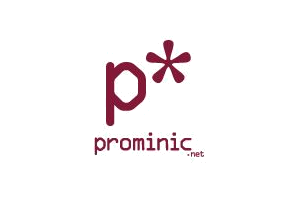E-Pro: 12 Tips for Lotus Instant Messaging
Tags :E-Pro Articles
Lotus Instant Messaging (LIM -- formerly Sametime)
can be an incredible business value if implemented and managed correctly.
Here are 12 fundamental, but hidden, tips to get the best performance and
usability. Everyone's environment is different, so some of the tips may
be more helpful to you than others.
Performance
1. Upgrade
to the latest versions. Sounds simple, right? LIM runs on top of Domino,
and with each release, Domino performs better with HTTP and other protocols.
And CPU usage has been documented to decrease through each version
of LIM for chat and meeting services, so it only makes sense to upgrade
to the most recent Domino and LIM versions possible. Note: The Domino 6.5.1
release is now out, but to run previous LIM versions, such as 3.1, you
need Domino 6.0.2CF1. If you are running LIM 3.0, you have to run Domino
5.0.12. Be aware of the server requirements for the LIM version you are
installing.
2. Apply
the LIM patches as they become available. For example, the STCore.jar
file was modified in the most recent patch (Incremental Fix 1 for LIM 3.1)
to address the issue of meetings not starting correctly in multi-CPU systems.
You can find recent patches under the Support Files section at www-10.lotus.com/ldd/down.nsf.
3. Consider
the additional load from repackaging all LIM communications as HTTP when
scaling your hardware. Tunneling all LIM traffic across port 80 is
a great usability feature because it eases communications by reducing the
number of ports. But it's a heavier load on the server, so weigh the need
carefully. For example, with an installation used only behind the firewall,
you might not need tunneling for any reason.
4. Experiment
with adjusting Connection Speed settings for better performance. While
in the LIM Web Administrator, if you navigate to the Configuration, Audio/Video,
Connection Speed Settings tab, you can modify the following for better
performance (but keep in mind all are global settings):
- Adjust the Jitter Buffer (not over 500mx is recommended) to correlate how much latency or delay the end user experiences in audio/video when tunneling. Smaller values have less latency but can miss speaker movements or portions of words.
- Tweak connection speed settings in LIM. You can administer and control the bit rate settings for audio/video and even screen sharing. Modifications to these areas can improve network performance.
- Adjust the setting for audio frames per packet to minimize network packet loss. This setting also controls network bandwidth consumption.
6. Specify the number of days to keep meeting history in notes.ini. In the variable STPurgeMeetingPastDays=X, the value X should represent any number but zero (which would mean no purge and defeat the purpose of the setting). The best practice on this setting is to meet any requirements of your organization for retention of meeting information. Otherwise, make it as minimal as possible to remove unnecessary documents.
7. Make sure that the server on which you install LIM has a video card and supports a color setting of 256 colors or higher. Failure to ensure this can result in some of the following:
- Users cannot save the whiteboard.
- Images on the whiteboard do not render correctly.
- The meeting room client opens with a gray whiteboard.
1. Take advantage of the many flavors of clients that LIM now offers across platforms. Your choices include:
- LIM Connect client: a downloadable and installed client for Windows machines. Use this client for users with dedicated machines that need the most functionality.
- LIM Java client: a client launched in a Web browser window. It has most of the functionality that you find in the LIM Connect client. Use this client for roaming users or when the user does not have the ability to install software on the local machine.
- LIM/Notes client integration: the client with the most limited functionality. It eases embedding awareness into mail and applications. Chat is the only piece available with the native client integration at this point. Use this client for ease of integration and communication. It is missing such features as file transfer, but for immediate chats, it is easy to manage and requires no extra software installation outside of Domino 6.5.x.
- Lotus Team Workplace (formerly Quickplace) and LIM function well together if you carefully follow the technotes for implementation. (www-1.ibm.com/support/docview.wss?rs=297&uid=swg27002835). The trick is to utilize LDAP from the beginning for the integration. If you do not, moving either package to LDAP for authentication can be a painful experience.
- LIM and the Notes client are growing closer together beginning in Notes 6.5. Be aware that you cannot hide this integration piece inside the Notes client until 6.5.1.
4. Discover LIM links and what they offer to your Web applications. LIM links let you start a simple chat session with a user without running LIM. This feature is great for help desk and customer-accessed applications via the Web. With advanced features through pop-up links, you can even send an e-mail, share an application, and add people to a contact list (if they are also using LIM).
5. Utilize Broadcast Meeting types when you have more than 20 attendees who do not need the ability to control the presentation. This broadcast type gives the presenter all the features -- whiteboard, screen sharing, chat, and the ability to send Web pages or polls. The attendees receive only the broadcast, including audio, but cannot interact. This capability is great for company announcements.
This brief list of performance and usability tips will get you on your way to a better-performing environment with happier users on the system. For more information, read some of the technical articles at developerWorks:Lotus at www-136.ibm.com/developerworks/lotus and in e-ProMag.com's article archive under the topic "Instant Messaging."
blog comments powered by Disqus
On Saturday, May 1st, 2004 by Chris Miller








